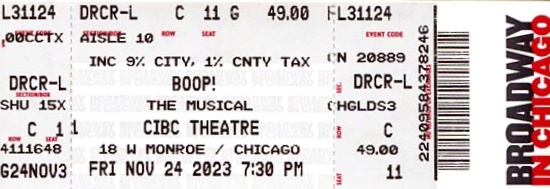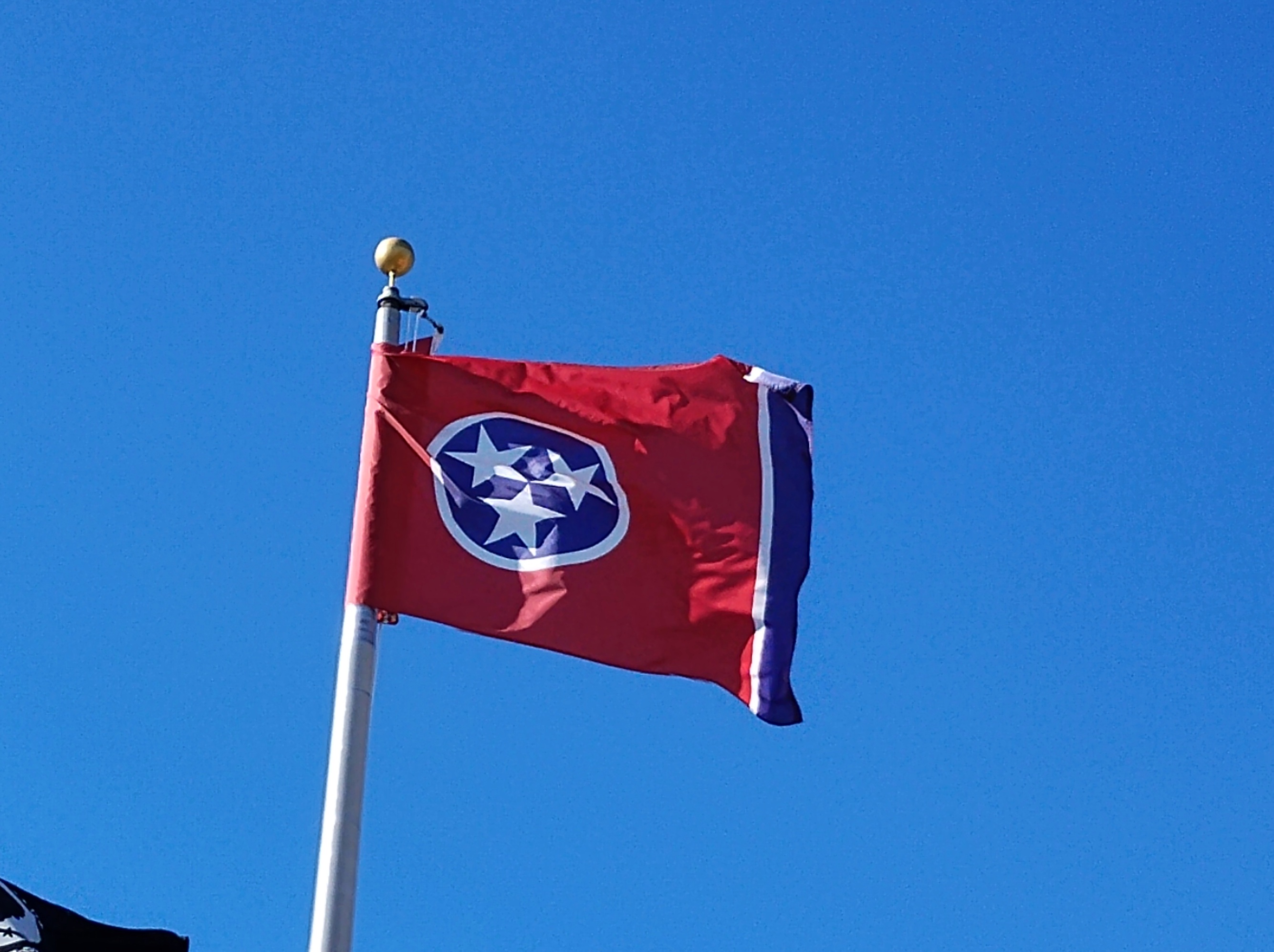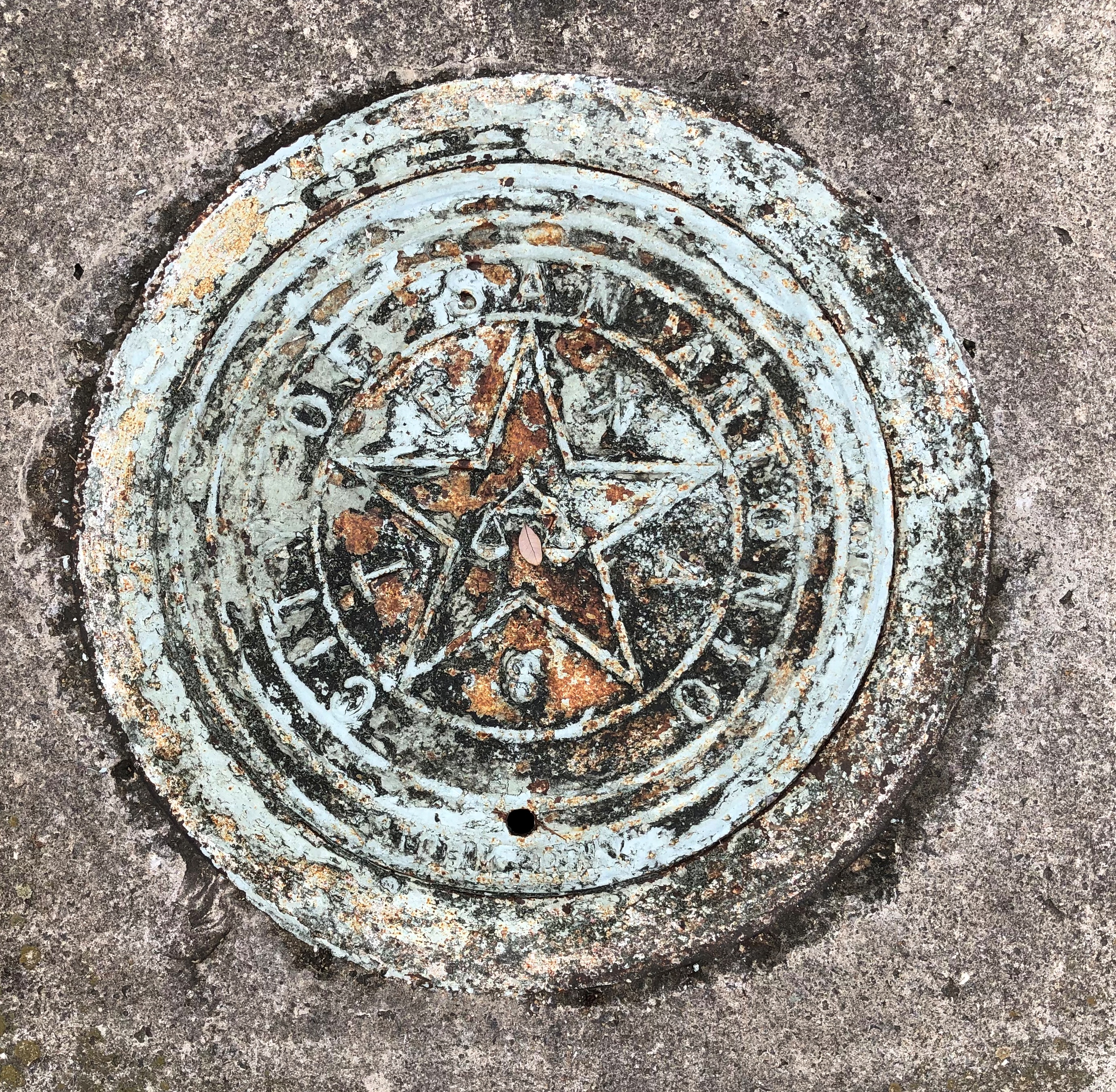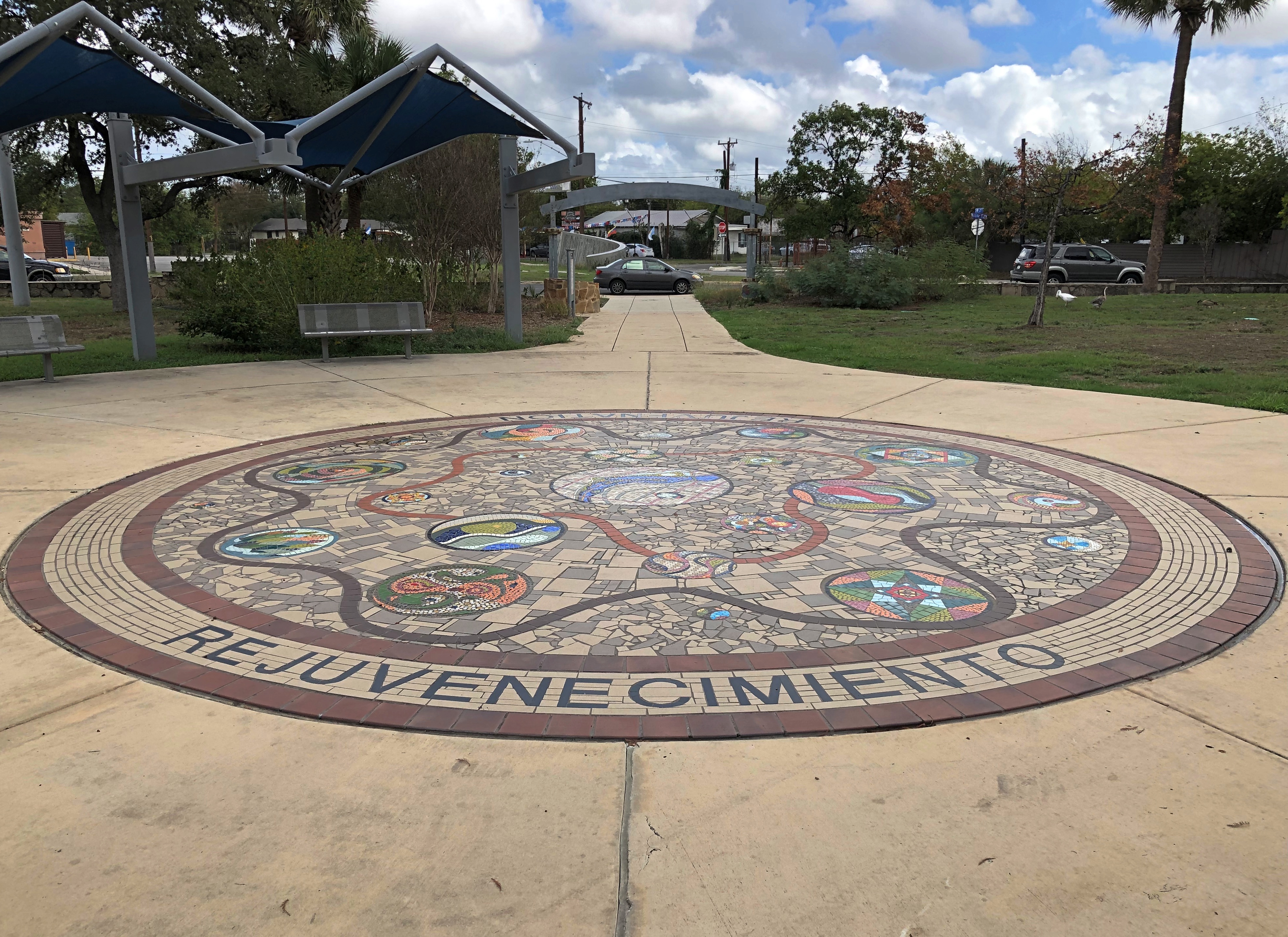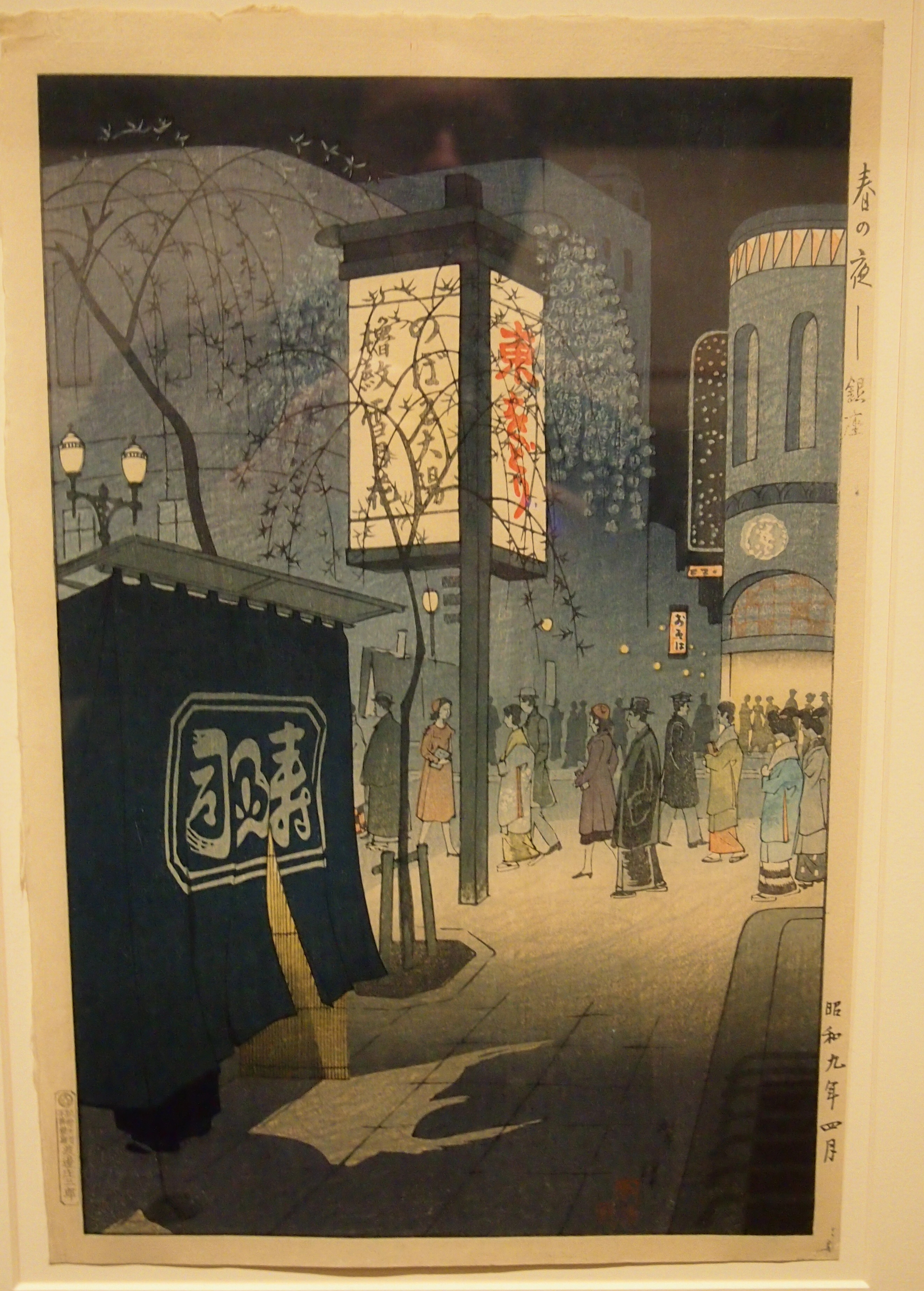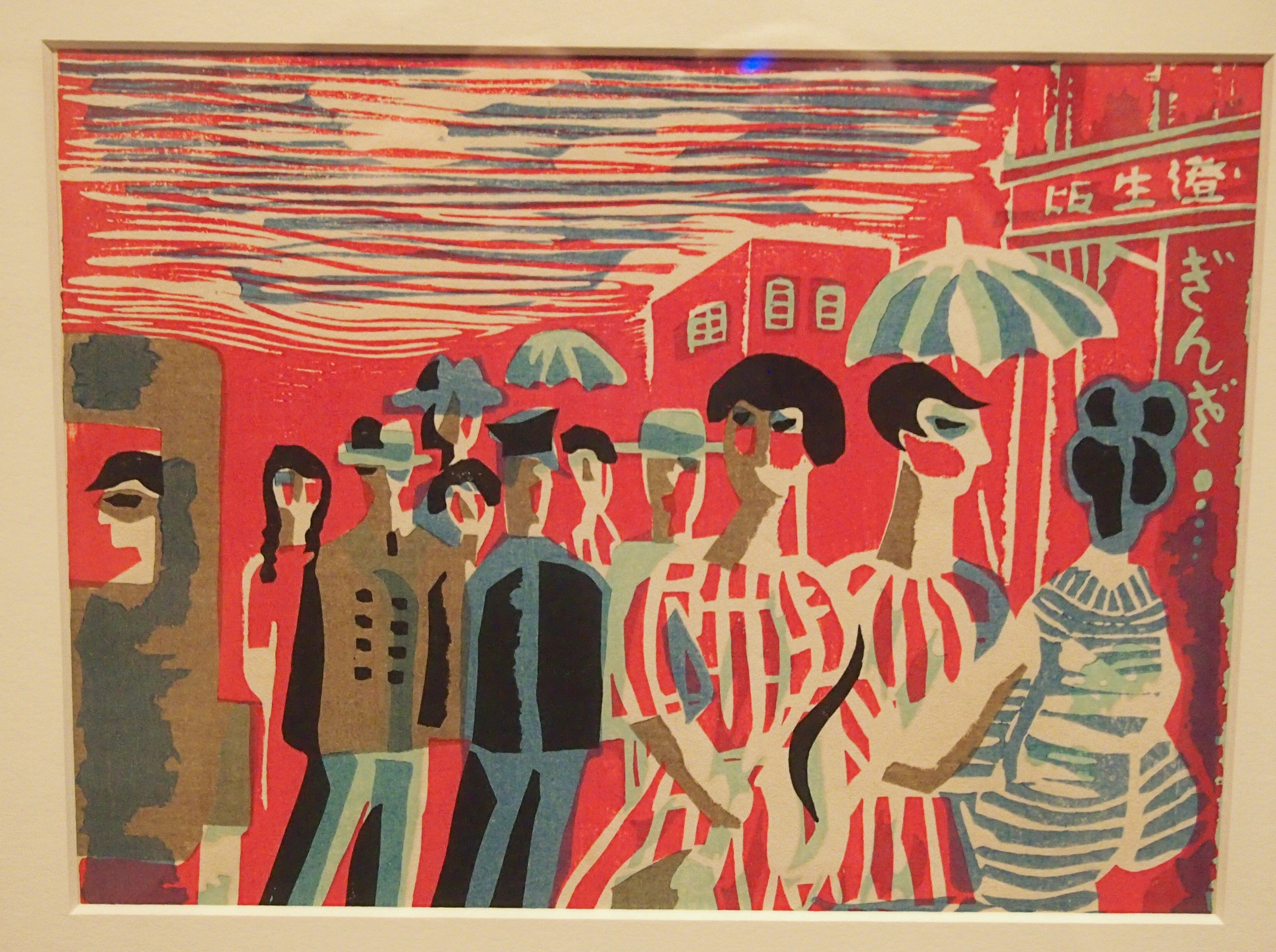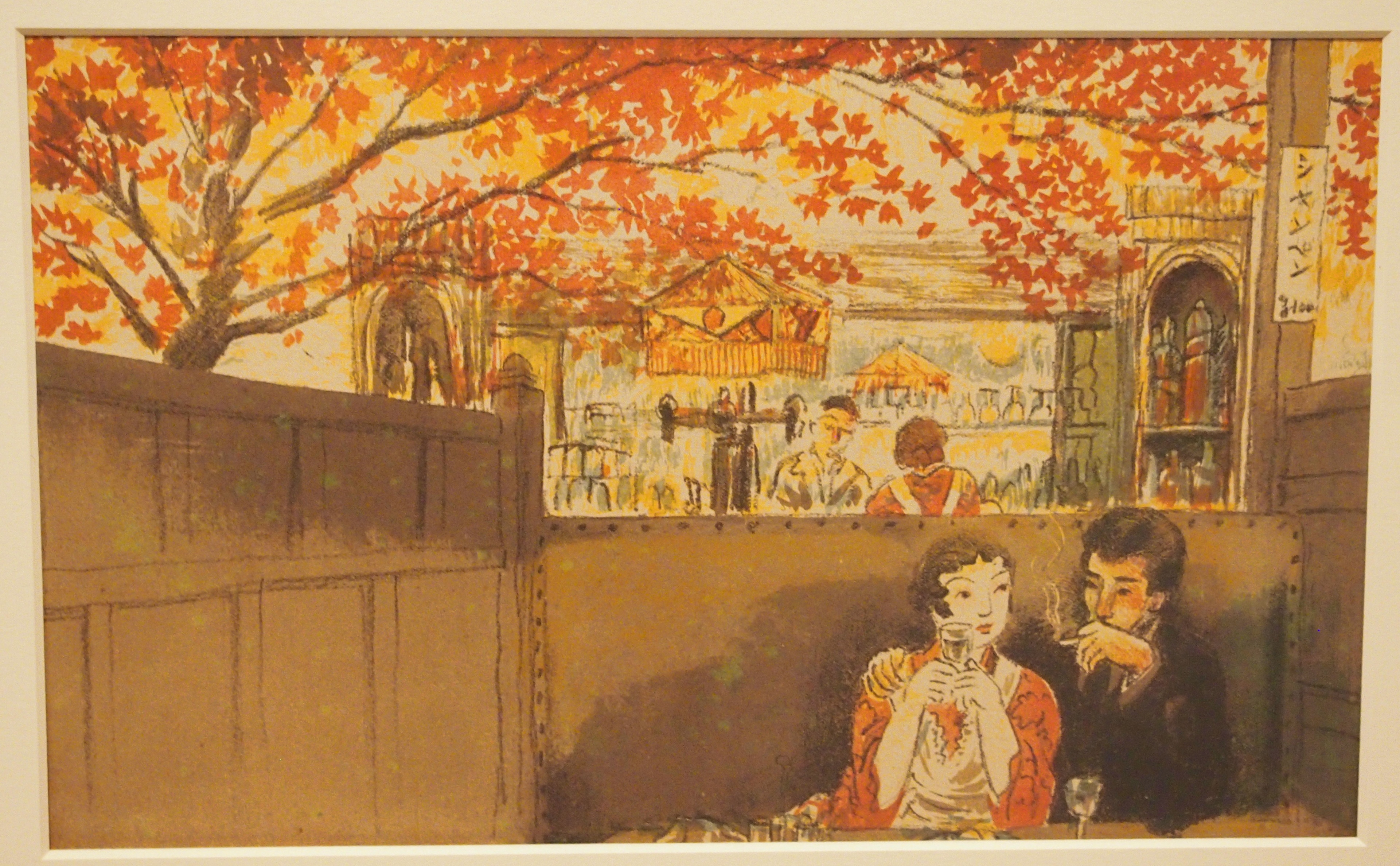Boop! = much fun. I know that because I remember enjoying myself during the new musical of that name, despite my uncomfortable seat there in the dress circle at the theater formerly known as the Sam Shubert, now named for a bank, in downtown Chicago. We popped in for the show on Friday evening.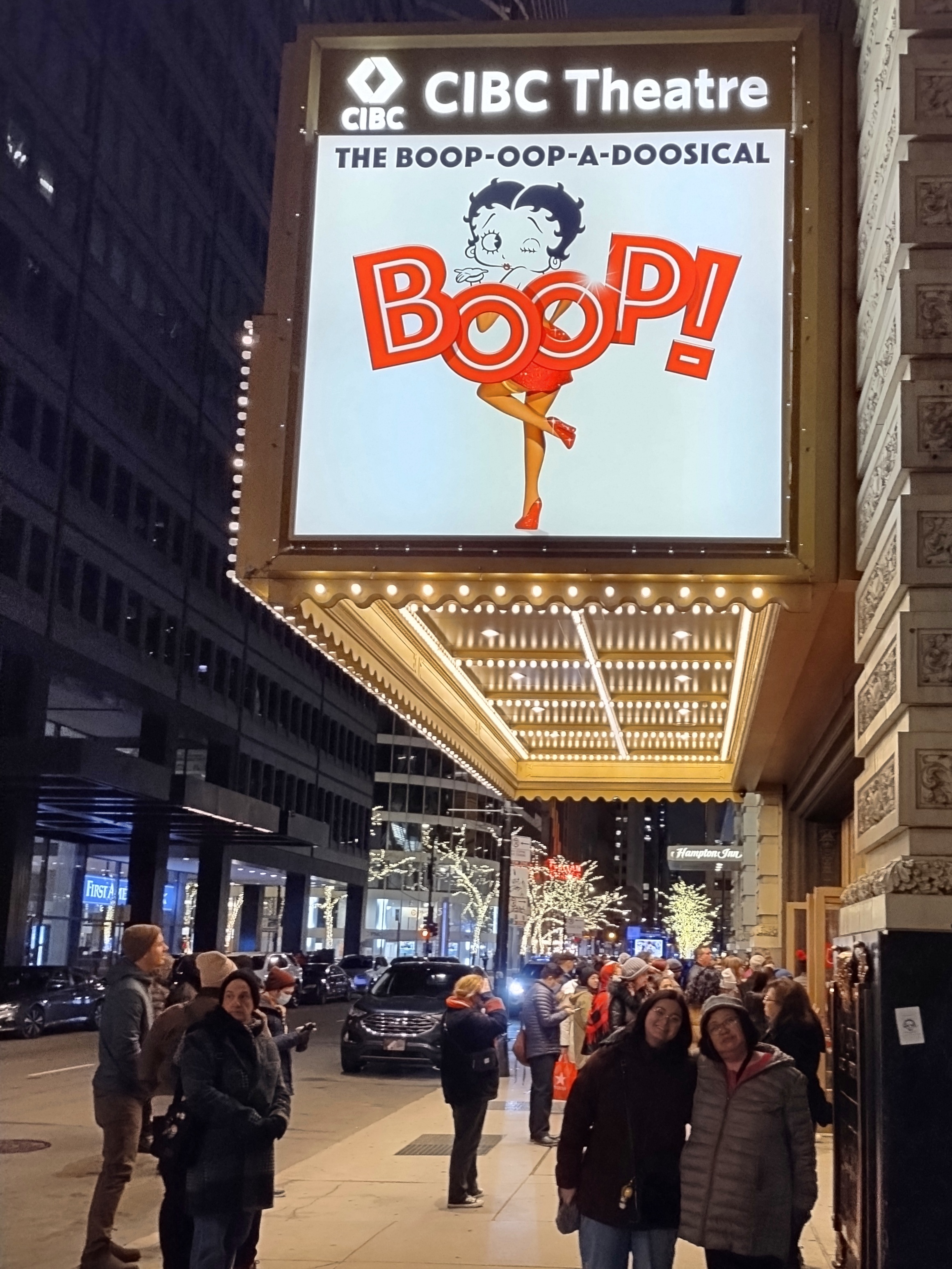
Even now, only four days after the performance, whatever detail I took in about the jazzy score or entertaining lyrics or the vivacious dance moves or the intensely colorful costumes – which were sometimes monochromatic yet colorful somehow – or the peppy dialogue or the remarkable sets, is all a kinetic blur.
That’s the way it should be with a musical, I figure. A little razzle, a little dazzle, something to enjoy in the moment. Still, Boop! wasn’t just a musical, it was a staged musical cartoon with a star character nearly 100 years old, singing and dancing her way through an appropriately gossamer plot.
A young woman named Jasmine Amy Rogers brought Betty to life with astonishing vitality and, often enough, a hot red dress, once Betty leaves monochrome behind. The supporting cast, up to and including a marionette dog, likewise filled the stage with song, dance and antics. The cast was first rate in every way.
Pudgy, Betty’s dog, a more-or-less life-sized marionette, did some astonishing moves himself, as guided by Phillip Huber, who once upon a time did some puppet work in the extreme oddity that was Being John Malkovich.
I am, I confess, mostly indifferent about Betty Boop. Or was, until I married a fan. Capt. Gus on KENS-TV Channel 5 didn’t show her cartoons on weekday afternoons after school; his thing was Popeye, though maybe he screened the Betty Boop short in which Popeye made his cinematic debut. In those pre-Internet, pre-You Tube days, the cartoons simply weren’t available. Betty, for me, was stuck in the amber of the 1930s, and while pop culture of the time has considerable interest, somehow she didn’t resonate.
So I grew to adulthood without giving her much thought, though I did see her brief appearance in Who Framed Roger Rabbit.
“Work’s been kinda slow since cartoons went to color, but I’ve still got it, Eddie!”
– Betty Boop, voiced by Mae Questel (d. 1998), who managed to live long enough to do so.
In Boop!, a monochromic-ish Betty, tired of being a cartoon celebrity, manages to transport herself to the “real world” via a machine concocted by Grampy, the inventor character from the shorts who is explicitly her grandfather in this show. She figures no one will know her in the real world, but she lands at New York Comic-Con in our time, in living color, and of course everyone knows her, especially the spunky little sister of her soon-to-be love interest, a modern jazzman. He provided the story’s shout-out to Cab Calloway, and I was glad to hear it.
Luckily, the story didn’t make too much out of Betty being a fish out of water, though that provided a little amusement. To her eventual dismay, she realizes she’s famous here, too.
Grampy, realizing that Betty needs to return to the cartoon world, comes to the real world to look for her, but also manages to spend the night with a real-world woman he had a dalliance with decades earlier. (The Hays Code doesn’t apply to this show, though it’s mostly wholesome.) There’s also a sleazeball running for mayor of real-world New York and it is he, in the fullness of time, who chases Betty around a desk, only to get clocked by her with a blunt object.
The sprinkling of serious elements – most musicals have a few – mostly involve female empowerment, though there was a dig at modern-day plutocrats. Betty is known for resisting sexual harassment and, after returning to the cartoon world, tells her director that she won’t be chased around desks by lecherous men any more in her cartoons.
I believe we saw the only the fourth performance of Boop! Not the fourth of this particular run, but the fourth ever in the history of the theater. I don’t think I’ve ever seen any big production that soon after its premiere. It was a fluke of marketing, and my experience with the character, that made that happen: a few weeks ago, a theater ticket website that sends me email once a week suggested Boop! I figured Yuriko, who has a longstanding fondness for Betty, would like it, so I got some tickets for something to do on the day after Thanksgiving. She did like it. Ann did too. We all did. Boop! is a crowd pleaser, and we were happy to be in the crowd.
Apparently the show has been in the works a long time and eventually was brought to fruition by director and choreographer Jerry Mitchell, who is very much a known quantity in the American theater. Its run at the Shubert serves essentially the same shakedown-cruise function as pre-Broadway runs in New England towns used to do – may still do, for all I know, but I expect Chicago offers a much larger pool of potential theatergoers.
Eventually, probably soon, Boop! will be on Broadway. As a crowd pleaser, I’ll bet it will do well there.
